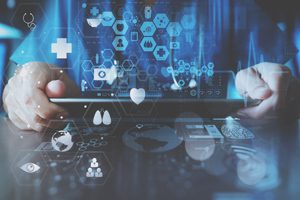Andrea Pitkus, PhD, MLS(ASCP)CM, ASCLS Informatics Scientific Assembly Vice Chair

In the pre-analytical phase of testing, Clinical Provider Order Entry (CPOE) EHR functionality assists physician ordering, including laboratory ordering. CPOE in many EHRs looks like an electronic reproduction of the paper laboratory order “checklist” which was previously used for ordering. The clinician checks or selects a single “CBC,” “Urine Culture,” or “Lipid Profile,” regardless of which laboratory to where the order is sent. The order name from each laboratory’s specimen collection manual/test catalog/laboratory compendium is rarely seen by the clinician at order entry, in favor of the “generic” name used across laboratories.
As a result, the clinician may not know that two panels performed by two different laboratories which have the same order name, may in fact be two different orders when one compares the differing result components which comprise them. Distinct differences in methodology, specimens required for analyses or other distinct differences in laboratory test orders may not be fully realized, leading to under and over utilization of laboratory orders.
Design of the ordering process, organization of orders, order descriptions, and required “ask at order entry” information such as hours of collection, hours fasting, or source of a culture indicating which body site was swabbed, all contribute to assisting the physician with efficient ordering. Note, EHR and LIS interfacing and technical aspects of the information systems were not mentioned first. Both are “informatics” examples contributing to successful information flow and communications between laboratory professionals and downstream end users of laboratory information.
Laboratory professionals know all too well how hemolysis from poor specimen collection impacts the quality of certain laboratory results or how incomplete mixing of an EDTA tube can lead to clots and impact on hematology results. Generation of quality information is part of our lifeblood. Specimen collection education programs or other decision support to ensure specimen quality are two more informatics examples.
In the analytical phase of testing, presentation of information to LIS end-users incorporates many informatics features. How many clicks or key strokes are needed to perform your daily tasks? What would you design differently or prefer to have incorporated in information systems? How you interact with computer systems is often via the graphical user interface (GUI, pronounced gooey). A study of how end-users use their computer systems, including short cuts and workarounds is often referred to as usability testing. Vendors may design features, but if not utilized by end-users, time and money may be wasted. In shopping for a new LIS, generating a list of requirements based on the needs of your laboratory professionals and testing performed in your laboratory, is an informatics decision support tool to assist your purchase.
During the analytical phase of testing, analyzers, automation systems, middleware, LISs, and other advanced technologies are examples of informatics tools. However, do you know that the design of manual testing processes, vendor inserts, standardized operating procedures (SOPS), quality and control processes, are decision support tools that aid in ensuring consistent, high-quality test results are generated and reported? Many aspects of the testing process involve checks to catch errors, in addition to LIS alerts of duplicate test orders, delta checks, or abnormal results.
In the postanalytical phase of testing, a wealth of information generated by laboratory professionals and pathologists is consumed by many different end users with many different purposes. Results encoded with LOINC and SNOMED CT received by public health are automatically routed to the appropriate department in many cases. Clinicians use many informatics and clinical decision support tools to help them understand patient results, which at times can outweigh their cognitive abilities. How laboratory results are presented to clinicians in a clear, concise and easy to consume manner within their EHRs is often as vital to their interpretation as are the results themselves. Co-mingling laboratory results with different specimens and methods, which often have different reference ranges can have a profound effect on patient care decisions. Health informatics studies focus on the usability of health information and workflows, so cutting and pasting and other short cuts, which can lead to error are reduced or eliminated in favor of optimal EHR functionality to support clinical workflows.
Laboratory informatics techniques may also be integrated into laboratory and pathology report design. Considerations need to be made not only in how data appears in the LIS, but also in the EHR to ensure character limits don’t cause truncation of vital laboratory information communicated to the clinician.
Involvement of laboratory professionals in all parts of the information flow is crucial to designing informatics tools, processes, and systems that support a total quality testing process. Laboratory professionals are a key component in not only understanding what can impact the quality of the laboratory information generated from laboratory testing, but also how results should be used downstream. With Meaningful Use, the Affordable Care Act, physician quality measure reporting all peppered with laboratory data, the value of informatics and laboratory expertise continues to increase, even if that value is not realized completely by those outside of the laboratory.
